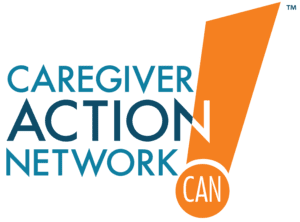Caregiving Resources: Helping Heart Disease Patients Stay Active
Caregiving Resources: Helping Heart Disease Patients Stay Active

Exercise can be intimidating for individuals with heart failure or heart disease. Many fear that physical activity could worsen their condition or cause complications. However, with the guidance of a doctor, light to moderate exercise can improve heart function, slow the heart rate, and enhance overall well-being.
As a caregiver, understanding the importance of exercise and how to safely implement it for your loved one is critical. Below are caregiving resources, practical tips, and actionable strategies to help heart failure and heart disease patients stay active while protecting their health.
Considerations for Exercise Among Heart Disease Patients
Before your loved one starts an exercise routine, consult their doctor to ensure safety and determine appropriate activities. Many heart patients benefit from beginning their exercise journey in a hospital-based rehabilitation program. These programs allow health professionals to monitor their vital signs, ensuring they don’t overexert themselves.
As a caregiver, it’s essential to watch for warning signs during exercise, including:
- Dizziness or shortness of breath
- A fast or irregular heartbeat
- Extreme fatigue
- Chest pain
If these symptoms occur, contact your loved one’s doctor immediately or call 911 in severe cases.
Types of Exercise for Heart Disease Patients
There are three main categories of exercises recommended for heart disease and heart failure patients:
 Flexibility Exercises
Flexibility Exercises
Flexibility exercises improve balance, range of motion, and joint mobility. This can reduce stiffness and make daily activities more comfortable. Activities like yoga and tai chi are particularly beneficial as they:
- Enhance breathing
- Lower blood pressure
- Reduce stress
Explore the American Heart Association’s Stretching and Flexibility Exercises for more guidance.
- Cardio Exercises
Cardiovascular exercises strengthen the heart and improve circulation. Walking is an excellent starting point for beginners. For those seeking more activity, consider:
- Biking
- Dancing
- Swimming (low-impact for those with joint issues)
Visit WebMD: The Best Exercises for Heart Failure to explore more options.
- Resistance Training
Resistance training helps strengthen muscles and bones. However, caregivers should check with a doctor to determine:
- Safe exercises
- Weight limits for lifting
Caregivers should ensure all exercise routines include these three phases:
- Warm-Up: Prepares the body for activity, reduces muscle soreness, and eases stress on the heart.
- Conditioning: The core of the workout; start slow and gradually increase intensity.
- Cool-Down: Helps heart rate and breathing return to normal while aiding recovery.
Learn more about exercise recommendations at Cleveland Clinic: Heart Failure and Exercise
Caregiver Tips for Supporting Heart Failure Patients
Exercise requires energy and commitment, and caregivers play a vital role in encouraging their loved ones to adopt heart-healthy habits.
- Focus on Nutrition
A heart-healthy diet complements exercise and boosts energy levels. While a doctor will provide specific dietary recommendations, caregivers can help by:
- Incorporating fruits, vegetables, whole grains, and healthy fats
- Reducing salt intake
- Avoiding processed foods
- Support Smoking Cessation
If your loved one smokes, quitting can significantly reduce heart failure episodes and improve their overall health. Support programs or counseling can help.
- Start Small and Build Habits
The time it takes to establish an exercise habit varies, especially for those who were inactive before their diagnosis. Encourage your loved one to:
- Begin with short sessions, gradually increasing duration and intensity
- Choose activities they enjoy to make exercising more appealing
For instance, if running feels daunting, biking or swimming might be better alternatives.
Making Exercise Enjoyable
To increase consistency and motivation, caregivers can encourage fun, engaging activities:
- Group Classes: Exercising with others adds accountability and social interaction.
- Dancing: For loved ones who enjoy music, dancing around the house or joining a class is a great cardio option.
- Outdoor Activities: Walking in nature or biking in the park can make exercise more enjoyable and less monotonous.
Creating a Heart-Healthy Routine
Here are some strategies caregivers can use to help their loved one stick to an exercise routine:
- Establish a schedule, such as walking at the same time daily.
- Use technology like fitness trackers to monitor progress and motivate them.
- Celebrate small milestones, such as completing a full week of workouts.
Resources for Caregivers
Accessing reliable caregiving resources is crucial for supporting your loved one with heart disease or heart failure. Here are some helpful links:
Helping a loved one with heart disease or heart failure embrace a more active lifestyle can improve their quality of life and potentially extend their lifespan. As a caregiver, your support, encouragement, and preparation are vital to their success.
Remember, small steps lead to big changes. Use the caregiving resources above to guide your loved one toward a healthier future. For more tools and insights, visit Caregiver Action Network.




